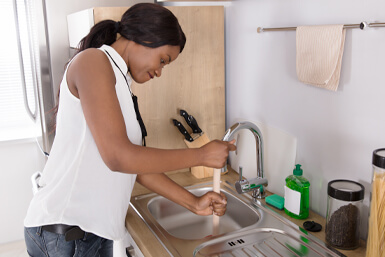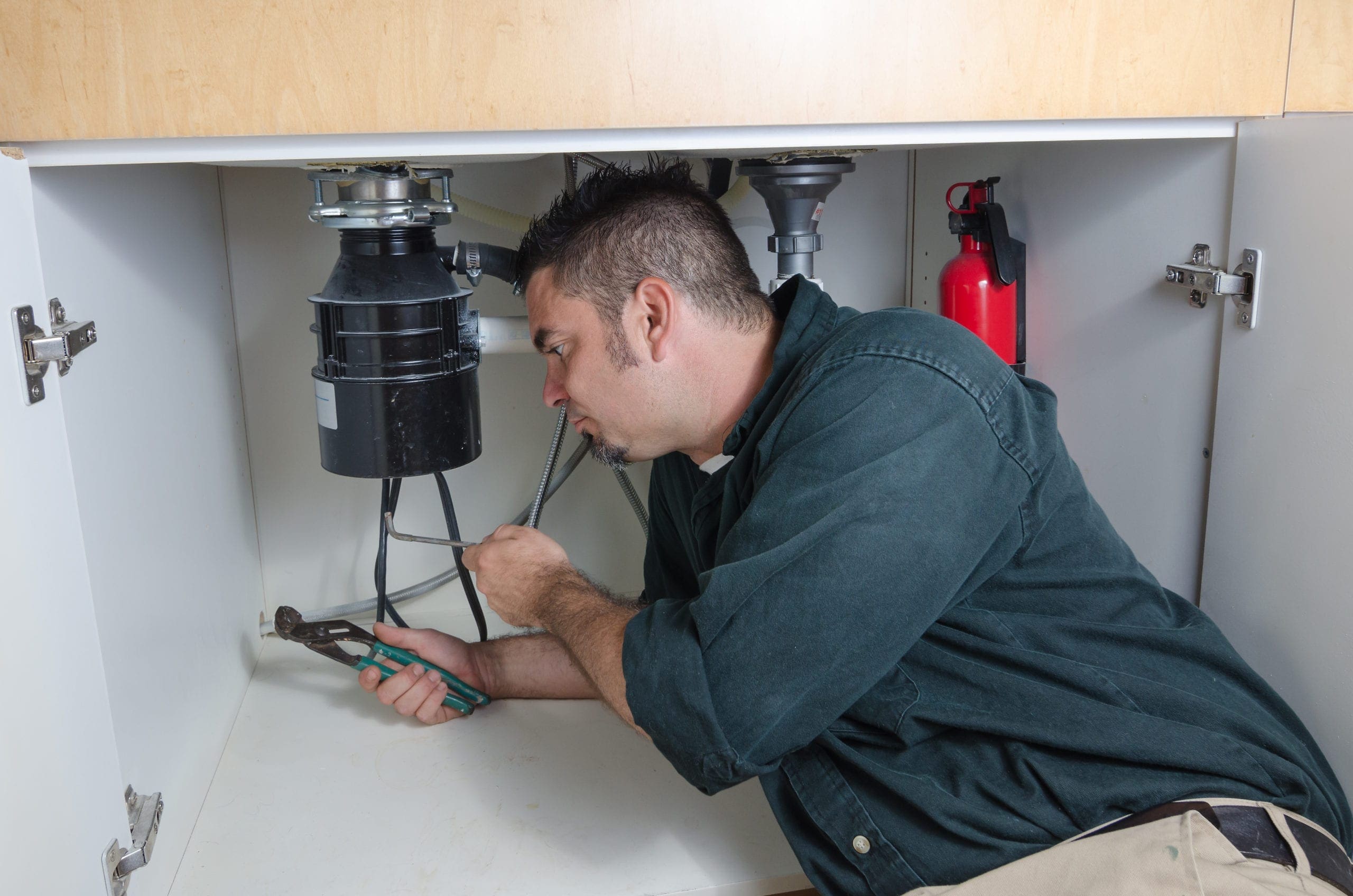Silencing Noisy Plumbing Easily
Silencing Noisy Plumbing Easily
Blog Article
Listed here below you might get a lot of reliable points pertaining to Why is My Home Making Strange Plumbing Noises.

To detect noisy plumbing, it is necessary to determine very first whether the unwanted noises occur on the system's inlet side-in other words, when water is transformed on-or on the drainpipe side. Noises on the inlet side have actually varied causes: too much water pressure, worn shutoff and also faucet components, improperly attached pumps or other devices, incorrectly placed pipeline bolts, as well as plumbing runs having a lot of limited bends or various other restrictions. Noises on the drain side typically originate from inadequate location or, as with some inlet side sound, a format consisting of tight bends.
Hissing
Hissing sound that happens when a tap is opened slightly normally signals too much water pressure. Consult your regional public utility if you suspect this trouble; it will be able to inform you the water stress in your location and can install a pressurereducing shutoff on the inbound supply of water pipe if needed.
Thudding
Thudding noise, usually accompanied by shuddering pipelines, when a faucet or appliance shutoff is turned off is a condition called water hammer. The noise and vibration are brought on by the reverberating wave of pressure in the water, which suddenly has no place to go. Sometimes opening up a valve that discharges water rapidly right into an area of piping having a constraint, joint, or tee installation can produce the same condition.
Water hammer can generally be healed by mounting fittings called air chambers or shock absorbers in the plumbing to which the problem shutoffs or faucets are connected. These devices allow the shock wave created by the halted circulation of water to dissipate in the air they consist of, which (unlike water) is compressible.
Older plumbing systems might have brief upright areas of capped pipe behind wall surfaces on faucet runs for the same purpose; these can ultimately full of water, minimizing or destroying their effectiveness. The treatment is to drain pipes the water supply totally by shutting down the major water shutoff and opening up all faucets. Then open up the main supply valve and also shut the faucets individually, starting with the faucet nearest the shutoff and ending with the one farthest away.
Babbling or Shrilling
Extreme chattering or shrieking that happens when a shutoff or tap is switched on, and that normally vanishes when the fitting is opened completely, signals loosened or faulty internal components. The service is to change the shutoff or faucet with a new one.
Pumps and also devices such as washing machines and also dishwashers can move motor sound to pipelines if they are improperly attached. Connect such things to plumbing with plastic or rubber hoses-never stiff pipe-to isolate them.
Various Other Inlet Side Noises
Creaking, squealing, scraping, breaking, as well as tapping generally are triggered by the development or contraction of pipelines, generally copper ones providing hot water. The sounds happen as the pipes slide versus loose bolts or strike neighboring home framework. You can typically determine the location of the trouble if the pipes are exposed; simply follow the noise when the pipes are making sounds. Probably you will certainly find a loose pipe hanger or a location where pipelines lie so near floor joists or various other framing pieces that they clatter versus them. Attaching foam pipe insulation around the pipes at the point of contact must fix the problem. Make sure bands and also wall mounts are safe and supply adequate assistance. Where possible, pipe fasteners need to be attached to enormous architectural elements such as foundation walls rather than to mounting; doing so decreases the transmission of vibrations from plumbing to surfaces that can intensify and also move them. If attaching fasteners to framework is inescapable, wrap pipes with insulation or various other resistant material where they get in touch with fasteners, and also sandwich completions of new fasteners between rubber washing machines when mounting them.
Dealing with plumbing runs that suffer from flow-restricting tight or many bends is a last resort that needs to be carried out only after getting in touch with a competent plumbing specialist. However, this circumstance is rather usual in older residences that might not have actually been built with indoor plumbing or that have seen several remodels, especially by amateurs.
Drainpipe Noise
On the drainpipe side of plumbing, the principal objectives are to remove surface areas that can be struck by dropping or hurrying water as well as to protect pipes to include unavoidable audios.
In brand-new building and construction, bathtubs, shower stalls, toilets, and wallmounted sinks and containers need to be set on or against resilient underlayments to reduce the transmission of sound via them. Water-saving commodes as well as faucets are less noisy than traditional models; mount them as opposed to older kinds even if codes in your location still permit using older components.
Drains that do not run vertically to the basement or that branch into horizontal pipeline runs sustained at floor joists or various other mounting present particularly frustrating noise issues. Such pipes are large sufficient to radiate considerable resonance; they additionally carry substantial amounts of water, that makes the circumstance worse. In new building, specify cast-iron dirt pipes (the big pipelines that drain toilets) if you can manage them. Their massiveness consists of a lot of the noise made by water travelling through them. Likewise, avoid transmitting drainpipes in walls shown rooms as well as spaces where people collect. Walls consisting of drainpipes must be soundproofed as was described earlier, making use of double panels of sound-insulating fiberboard and also wallboard. Pipelines themselves can be wrapped with unique fiberglass insulation made for the purpose; such pipes have an invulnerable plastic skin (often including lead). Outcomes are not constantly sufficient.
If Your Plumbing is Making These Sounds, There’s a Problem
A Bang or Thump When You Turn Off a Faucet
If a loud bang or thump greets you each time your turn off running water, you likely have a water hammer. A water hammer occurs when the water velocity is brought to a halt, sending a shock wave through the pipe. It can be pretty jarring — even worse, damaging to your plumbing system. All that thudding could loosen connections.
Strange Toilet Noises
You’re so familiar with the sounds your toilet makes that your ears will be attuned to anything out of the ordinary. Fortunately, most unusual toilet noises can be narrowed down to just one of several problems.
Foghorn sound:
Open the toilet tank Flush the toilet When you hear the foghorn noise, lift the float to the top of the tank If you’re ambitious, you can remove the ballcock valve and disassemble it to replace the washer. Or you can more easily replace the ballcock valve entirely. This device is relatively inexpensive and available at most any hardware store.
Persistent hissing:
The hissing following a flush is the sound of the tank filling. It should stop once the tank is full. But if the hissing continues, it’s likely because water is leaking out of the tank. The rubber flap at the bottom of the tank can degrade, letting water slip through and into the bowl. That’s why the tank is refilling continuously. Fortunately, this is an easy fix:
Cut the water to the toilet by closing the shutoff valve on the water supply line. Flush the toilet to drain the tank. Disconnect the flapper Attach the new flapper Gurgling or bubbling:
Gurgling or bubbling suggests negative air pressure in the drain line, likely resulting from a clog. As air releases, it causes the water in the toilet to bubble. This could either be a minor issue or a major one, depending on the clog’s severity. Clogs can be caused by toilet paper or more stubborn obstructions such as tree roots. If you can’t work out the clog with a plunger, contact a professional plumber for assistance because a clog of this magnitude could lead to filthy and unsanitary sewage backups in your sink bathtub.

I'm just very eager about Why Do My Pipes Make Noises and I'm hoping you enjoyed the entire blog post. Are you aware of anybody else who is in to the niche? Why not promote it. I take joy in reading our article about Why Do My Pipes Make Noises.
Request An Estimate Report this page